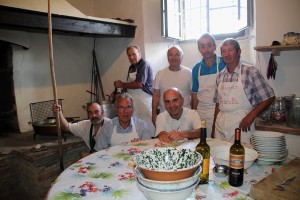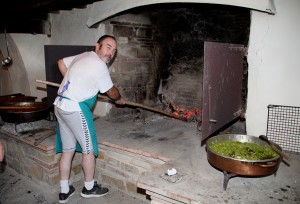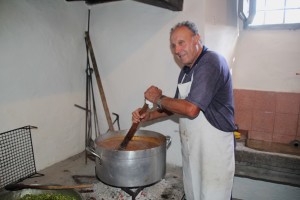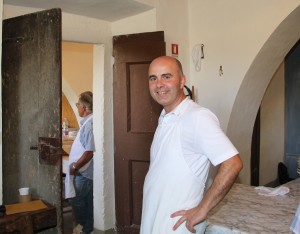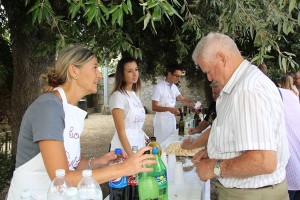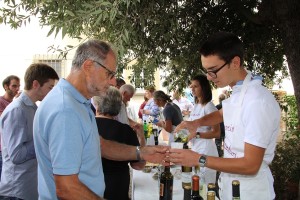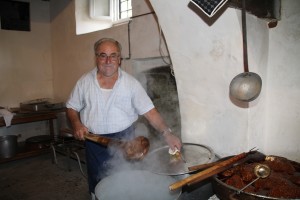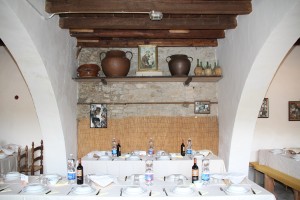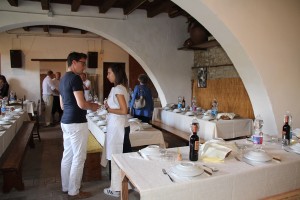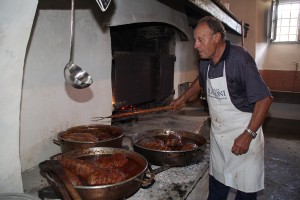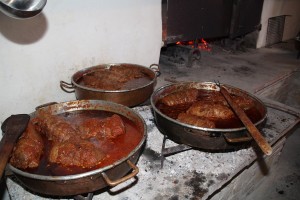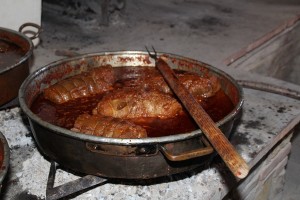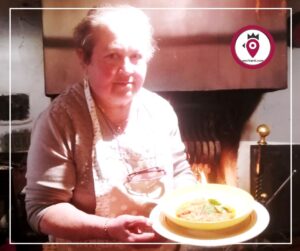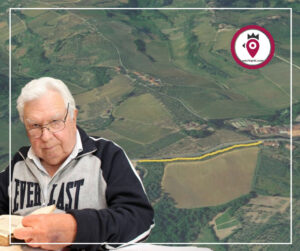Articolo disponibile anche in: Italian
Carrots, onions, celery, all strictly cut by hand, as well as meat, finely prepared with a knife, to make an extraordinary sauce whose taste keeps local memories alive.
The culinary wisdom of the team of men who, with passion and commitment, carry on the tradition of the “Bifolchi lunch” (“bifolco” is a man who works the land) is something the whole territory is proud of.
There is the smell of the countryside and the Chianti land. There are flavours of the past, real, natural, and genuine.
It’s one of the oldest meals in Tuscany, organized in the rooms of the Sanctuary of Santa Maria delle Grazie, where you find a famous fresco attributed to the Masaccio school. It’s the past brought to life with the hands of the present.
The smell of the “stracotto” meat sauce, cooked on a slow fire for six hours, fills the senses of the citizens of Pietracupa and San Donato in Poggio.
They witness a religious tradition that dates back to the seventeenth century when the “Bifolchi” Feast was celebrated. The latter was used to offer a basket full of grain to the Madonna of Pietracupa (at San Donato in Poggio, Tavarnelle).
In return they received a rich, meat-based lunch. On the table there was broth, boiled beef, meat cooked with sauce, quarters of chicken, bread and wine. The bosses’ lunch, similar in shape, is what opens the spring season.
Citizens have been delighted with a full menu, made up of typical Tuscan starters, pasta with meat ragout, “stracotto” meat with a side of peas and cannellini beans cooked with tomato, followed by typical Tuscan biscuits ‘cantuccini’ and the sweet wine “vinsanto”.
The lunch was organized by the Fabbriceria, the body that manages the Sanctuary of Santa Maria delle Grazie at Pietracupa, run by Paola Torcini.
“There have been many interventions over the years,” says one of the Councillors of the Fabbriceria, Alessandro Tozzi, “for the betterment, promotion and maintenance of the Sanctuary. We have restored artistic works, architectural elements and the next goal is the realization of the sewerage system and the restoration of parts of the religious complex’s exterior. Work that requires an estimated cost of 15 thousand Euros”.
There are many long serving volunteers who have taken care of the lunch for over fifty years, as chefs like Giovanni Bartalesi and many other tasks, but now it’s time to pass it on to the young, and some young people like Germano Semplici, have already come forward.
